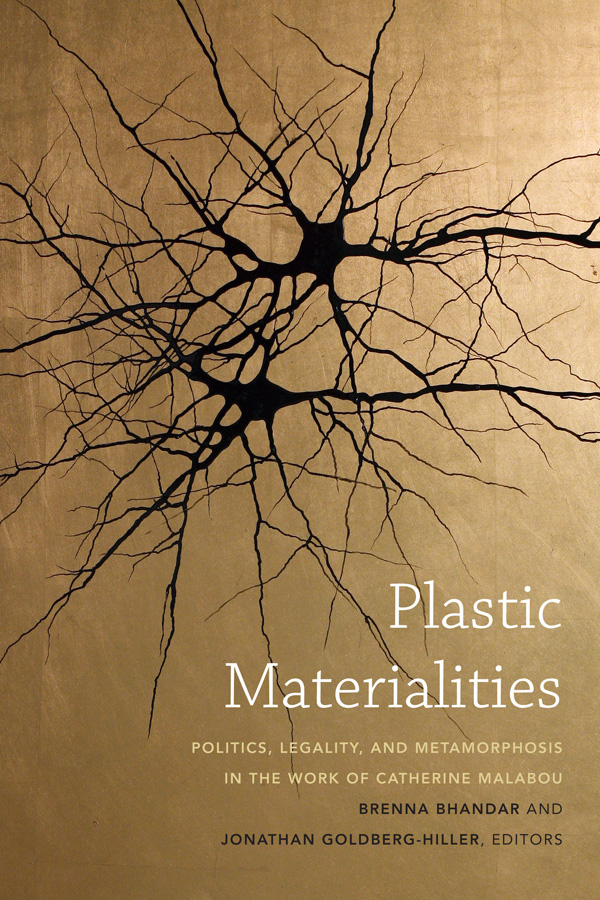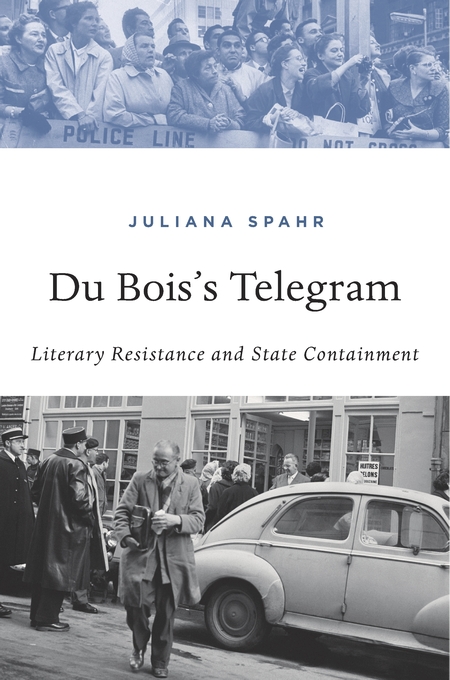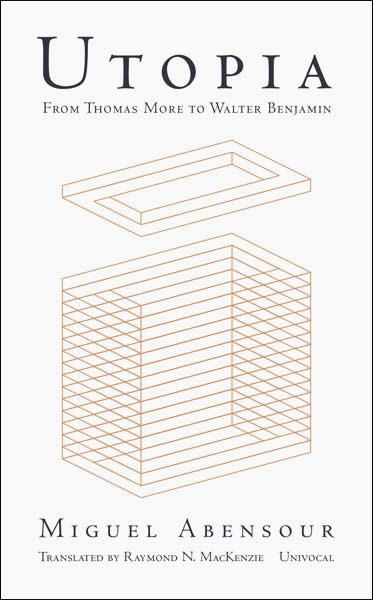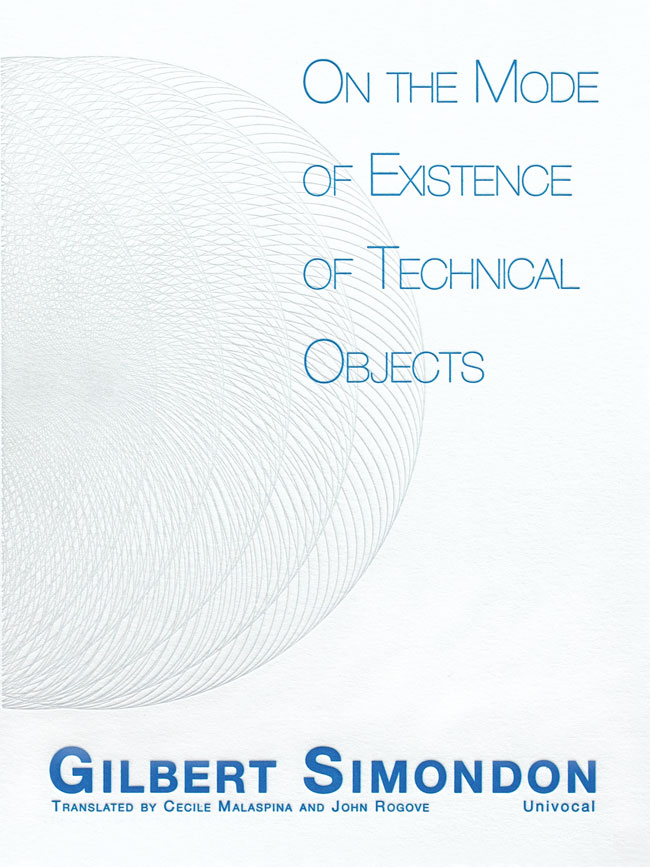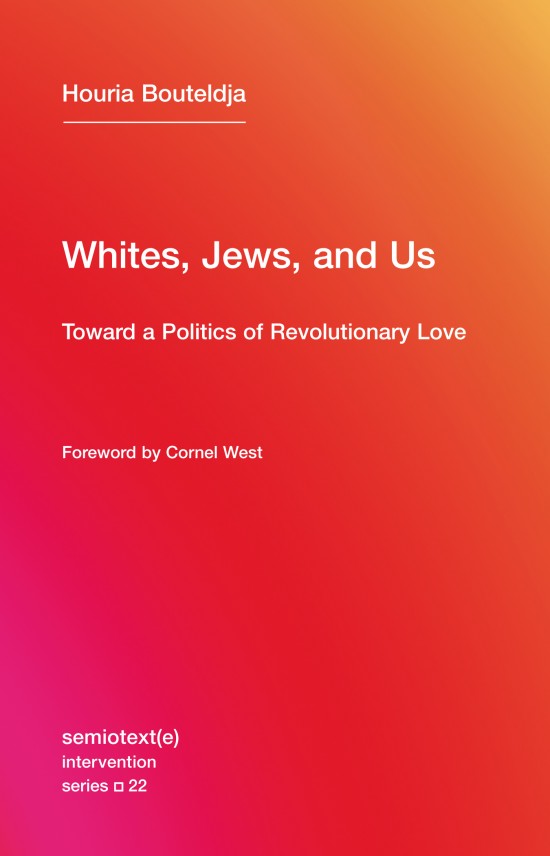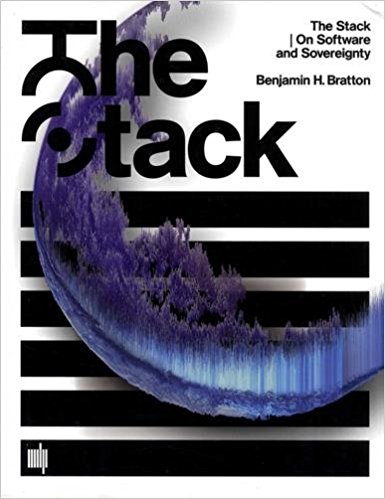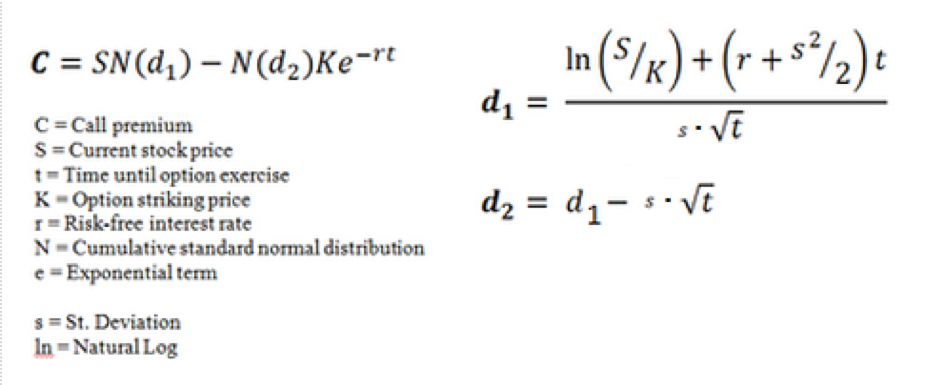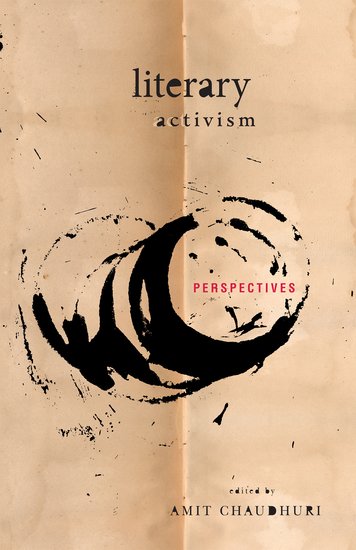by Tyler M. Williams
Review of Brenna Bhandar and Jonathan Goldberg-Hiller, Plastic Materialities: Politics, Legality, and Metamorphosis in the Work of Catherine Malabou (Durham: Duke UP, 2015)
Catherine Malabou’s pioneering philosophical conceptualization of plasticity has attracted a recent surge of critical attention, yet she rejects any suggestion that plasticity is her own, signature idea.[1] Malabou instead argues that plasticity, unattached to the singular identity of an author, circulates dynamically within the history of philosophy and gains its conceptual shape from the rich heritage that has unwittingly played host to it. Plasticity, Malabou says, is “trapped within the movement of contemporary philosophy itself” (Malabou and Williams 2012: 4). Although the vast majority of Malabou’s work since the publication of her first book, The Future of Hegel, highlights the debt that key philosophical periods and figures owe to plasticity’s power (a quiet tradition that spans from antiquity through poststructuralism and into the current vogue of new materialism), she consistently adds that plasticity also exceeds any strict disciplinary circumscription. Indebted as much to biology as to philosophy, and then onward to psychoanalysis, gender studies, literature, and anthropology, to name a few, plasticity by Malabou’s account always pushes at philosophy’s limit as philosophy’s unassimilated, supple remainder. Equally at home inside and outside philosophy, giving philosophy its shape while simultaneously exposing it to adaptation and change, plasticity challenges the very possibility of a rigid distinction between conventional notions of “inside” and “outside.”
Derived etymologically from the Greek plassein, meaning both “to give” and “to receive” form, plasticity expresses the malleable condition of anything subjected to changes in form. Critics have often misconstrued Malabou’s understanding of plasticity’s transformability by treating it as a nihilistic ceaselessness or “perpetual change” that never stays in one place long enough to stand for anything.[2] This misreading reduces plasticity to an infinite production of the new by synonymizing plasticity and elasticity, two terms Malabou repeatedly distinguishes from each other—particularly in What Should We Do With Our Brain? but also in Plasticity at the Dusk of Writing and Ontology of the Accident, to say nothing of her many essays and interviews. Although elasticity and plasticity both give and receive form, elasticity retains the ability to return to a form prior to its transformation. Elasticity’s polymorphism thus amounts to a state of infinite variability and ceaseless change, but plasticity “cannot return to its initial form after undergoing deformation” (Malabou 2008: 15). Plasticity envelops the capacity for transformation and the rigid solidity of “a certain determination of form” (15).
Almost paradoxically, then, plasticity’s resistance to elasticity comprises its most dynamic aspect. As much as plasticity changes form, it also preserves a shape, marks a point of resistant stability, and concretizes itself while retaining the mobility that threatens the concrete with destruction, which is why Malabou describes plasticity as terroristic in Ontology of the Accident (5). Taken as a whole, Malabou’s work shows that the philosophical tradition operates according to this dialectic. When she writes in Plasticity at the Dusk of Writing that plasticity’s “range of meanings” continues “to evolve with and in language” so much that “the very significance of plasticity itself appears to be plastic,” Malabou suggests that plasticity is doubly responsible for solidifying tradition and for maintaining that tradition’s suppleness (2010: 67). Its “significance” forms and reforms itself into the future like a type of auto-inheritance that shapes and preserves the legacy through the dynamic processes of heredity itself. The “significance” of plasticity therefore cannot be confined to the specific domains of Malabou’s study. Similar to Derrida’s insistence that deconstruction is “at work in the work” (1986: 124), plasticity for Malabou names a general logic that remains irreducible to any particular discourse, which is why she rejects a proprietary claim on the concept.
The practical question of what to “do” with plasticity is thus both urgent and irresolvable. Urgent because, in addition to mobilizing innovations within neurobiology and epigenetics, plasticity’s dialectic of change and resistance constitutes, according to Malabou, the most adequate model for democratic opposition to hegemonic structures of global power. Irresolvable because plasticity is not an abstract transcendental concept, so the “doing” of plasticity will always be a matter of plastic materialities—of the brain (What Should We Do with Our Brain?), of gender (Changing Difference), of the subject (Self and Emotional Life), of trauma (The New Wounded), and so on. Yet, when following Malabou, a major interpretive error is to mistake the forest for the trees, as it were, and to restrict plasticity’s general movement to the specific contexts via which Malabou happens to articulate it. Plasticity is itself plastic and thus constitutes a generalizable “motor scheme,” a “metamorphic structure,” rather than a given technique, tool, or circumscribed topic (2010: 12, 27). As an interdisciplinary project, Malabou’s work demands a disciplinary responsibility to the intractably philosophical “motor” of plasticity’s “structure.”[3]
Highlighting plasticity’s transformational role at the heart of the philosophical tradition, but paying particular attention to the interdisciplinarity Malabou draws from philosophy’s mutability and variability, Brenna Bhandar and Jonathan Goldberg-Hiller present Plastic Materialities: Politics, Legality, and Metamorphosis in the Work of Catherine Malabou, the first book of collected essays to be devoted entirely to Malabou’s growing oeuvre.[4] The volume includes three previously unpublished or thoroughly revised essays by Malabou herself, a brief interview conducted with her by Bhandar and Goldberg-Hiller, and nine critical essays that address Malabou’s work from a variety of disciplines including psychoanalysis, postcolonial studies, aesthetics, epigenetics, Marxism, biopolitics, critical race theory, entomology, and war studies.
Plastic Materialities commendably demonstrates the vast applicability of Malabou’s thought. Unsurprisingly, the distinction between the volume’s stronger and weaker essays falls along lines of interdisciplinary responsibility. Chapters that remain attentive to the disciplined stakes of Malabou’s interdisciplinarity are most at home in a book of this sort, since they avoid the aforementioned trap of essentializing the scientific contexts in which Malabou articulates plasticity’s general “scheme.” Weaker chapters commit this essentialist error by ignoring the philosophical discipline of Malabou’s project, treating it instead as an easily transplantable index of interdisciplinary terms.[5] Rather than catalogue these merits and shortcomings in each chapter, what follows is a general account of how this distinction relates this volume to Malabou’s project as a whole.
As the editors remark in their introduction, Plastic Materialities wants to identify how plasticity shapes a political itinerary (15). The volume thus addresses directly a debate that has trailed Malabou at least since the arrival of What Should We Do with Our Brain? in English translation in 2008: whether her account of plasticity necessarily entails the inherent political resistance she identifies with it. Much of Malabou’s short book argues for this necessity by calling for a shift in our “neuronal consciousness,” a shift that amounts to recognizing the brain as plastically adaptable to environmental input rather than conventionally programmatic and mechanical. She argues that a major consequence of this shift from neural preformationism to adaptability includes the abandonment of corporate, imperial, social, economic, and biopolitical structures of sovereignty predicated on neuronal ideologies of a rigidly centralized brain. Moreover, if many structures of power today already appear to work plastically, then, like its biological counterpart, this plasticity logically includes within it a foundational and unassailable resistance. Precisely what this resistance entails remains mostly unclear in Malabou’s work. The task of this volume therefore seeks to clarify the stakes of this resistance. In light of global neoliberalism’s wholesale reliance on corporate-capitalist models of flexibility and elasticity, for example, the editors, following Malabou both to the letter and toward new horizons, target the implications of plasticity’s “use” to “disrupt these structures” (2).
At least two major considerations follow from the project Plastic Materialities sets for itself. The first, which Alberto Toscano most directly articulates in his chapter, concerns this fundamental question about the adequacy of plasticity with politics. Toscano argues that Malabou’s use of plasticity to “rethink the dialectical character of contemporary social forms,” particularly the “neoliberal formatting of change under the imperatives of flexibility, adaptability, and employability,” remains too philosophical (91, 97). He claims that Malabou’s philosophical recourse to neurobiology preserves the traditional image of philosophy as a discipline responsible for “providing a conceptual synthesis for other disciplines and practices” (93). As a result, this traditionalism only enables Malabou to link neuroplasticity and political resistance analogically: the brain is like the social, biological resistance to neural order is like political resistance to hegemony, plastic matter works like philosophical critique, and so on. Yet, Toscano concludes, “To think the social is like the brain is no more enlightening today than to think that the economy was like a large organism in the nineteenth century or like a hydraulic machine in the twentieth” (105). Unlike some essays in Plastic Materialities that uncritically accept and then reapply Malabou’s politics elsewhere (those by Carotenuto, Shapiro, Grove, Bhandar and Goldberg-Hiller all trend in this direction), Toscano’s essay remains skeptical of whether Malabou’s politicization of plasticity is sufficiently—or even necessarily—political.
The second consideration concerns the volume’s isolation of “destructive plasticity” as a privileged concept. According to Malabou, “destructive plasticity” coincides with the productive work of “positive” plasticity. For example, in a synthesis of production and destruction, the brain abandons unused synaptic connections to build ones that are more efficacious. The priority Plastic Materialities places on “destructive plasticity” removes it from the broader context of Malabou’s work, thereby reducing it to a simple synonym for “resistance” and thus to some sort of tool or “resource” that can be “used” in the process of realizing some sort of intentional outcome (2, 20). However, as she makes clear in her own contributions to this volume, Malabou expressly rejects this teleology. Characterizing “destructive plasticity” as an apparatus that can be applied to whatever disciplinary field skews the dialectical symmetry of Malabou’s work and overlooks the contexts in metaphysics and ontology in which Malabou first formulates this concept. Moreover, insofar as Malabou’s later work radicalizes destructive plasticity beyond the productive/destructive binary, the very possibility of destructive negativity remains for her an ongoing question.
In the paragraph that opens the final chapter to Ontology of the Accident, her “essay on destructive plasticity,” Malabou is still asking if “destructive plasticity is possible” (2012c: 73). Although the untitled preface to this short book clearly asserts that, yes, destructive plasticity is indeed possible and this possibility is evident biologically, the type of destruction that interests neurobiologists is ultimately productive. This productive destruction works as a “sculptural power that produces form though the annihilation of form” (Malabou 2012b: 49). (To reuse the example provided earlier, a process of “cellular annihilation” destroys certain components of an organism to enable that organism to grow, develop, and survive.)[6] However, although current biological discourses recognize the productive work of destructive negativity, Malabou’s interest in the possibility of a more radical destructibility in Ontology of the Accident and The New Wounded goes beyond this productive, positive function. Malabou wants to think the possibility of a negativity that remains exclusively or absolutely negative. A negativity unadorned, as it were, with a complimentary, positive, or redeeming teleological function.
Of course, one could suggest (as Malabou does) that this questioning of possibility already assumes a position of affirmation, since possibility “designates what one is capable of” or “what may come into being” (2012c: 73). To question the possibility of anything asks for the affirmation of that thing’s production. In this sense, questioning the possibility of destructive plasticity’s negativity finds itself wrapped tightly in contradiction; the premise of the question compromises the possibility of a non-productive negativity from the start. From the metaphysical tradition that positively binds possibility to actuality, the possibility of an unproductive negativity would seem logically impossible. Malabou therefore demands a new understanding of possibility as such, an ontology that could account for a possible negativity that is not already affirmative. In other words, unlike Hegel’s dialectically productive negativity, Malabou seeks a possibility that would not be possible, a no that refuses a silent yes, a possibility that would not be tethered to the affirmation of a creativity. The most destructive force in Malabou’s renegotiation of possibility is its impossible demand, or rather its demand for impossibility. The “ontology of the accident” thus names the impossible possibility of the absolutely impossible.
Malabou’s own contributions to Plastic Materialities address these two considerations together—as if the two are actually one. Across her three essays, Malabou argues that attention to the ontology of plasticity demands a specific politics. Her contributions to this volume investigate the chance of this onto-political relation and the (im)possibility of its future shape. Plastic Materialities makes an impactful contribution to the growing field of interest in Malabou’s work precisely because Malabou here provides perhaps her most thorough account of the relationship between plasticity’s ontological critique and its political import.
In “From the Overman to the Posthuman: How Many Ends?” Malabou revisits the conclusion Derrida reaches in his famous essay “The Ends of Man.” There, Derrida remarks that the history of nonhumanist philosophy—including Hegel, Husserl, and Heidegger—ultimately reconstitutes an essentialist concept of the human. Derrida argues that a grand repetition is at stake, since early attempts outside humanism retain and repeat the premises of that same humanism. The “end” (closure) of humanism carries an essentialist “end” (telos) of the human. And yet, at the end of Derrida’s text, which Malabou argues is a sort of beginning, a passing reference to Nietzsche leaves open an opportunity to rethink repetition and, thus, to renew a thinking of the possibilities and impossibilities of humanism. Is there a chance for nonhumanist thought, Malabou asks, that does not fall victim to this essentialist repetition?
Malabou points out that Nietzsche’s sense of repetition is related directly to revenge, since “revenge” names the memory (what Nietzsche calls the “inability to forget”) essential both to the human and to the structure of temporal succession. Redemption from the repetitions of humanism would thus be tantamount to a redemption from revenge, a yes-saying that can embrace repetition without relying on the retention of a pre-constituted essence. To account for this refined sense of repetition, Malabou turns to recent biological research into reparative stem-cells, which can renew (i.e. repeat) themselves and thus forge new bodies or parts of bodies without recourse to a structure of “revenge.” A repetition that does not simply fulfil a program but produces itself from out of itself. The possibility of the non-human, or of “the non-humanist tradition,” for Malabou amounts to thinking repetition beyond the vicissitudes of this essentialist revenge. Here and in her other two contributions to Plastic Materialities, Malabou argues that these innovations in biological research create new philosophical horizons—not simply within the applicative domains of “philosophy of science” or “bio-philosophy” but, more specifically and significantly, within the traditions of metaphysics and humanism writ large.
By thinking plasticity as both a thing and a process, that is, as an object of scientific research and as the transformation of philosophical concepts of essence, life, being, the human, etc., Malabou identifies an impasse at the heart of biopolitical and poststructuralist confrontations with “science.” In her essay, “Will Sovereignty Ever Be Deconstructed?” she specifically targets the tendency for thinkers like Derrida, Foucault, and Agamben to regard science as a rigidly mechanical counterpart to the critical dynamism of the humanities.[7] (Here, one might think of Heidegger’s famous statement that science does not think, although Malabou does not include Heidegger in her list of interlocutors in this particular essay.) Philosophy’s rigid characterization of science, Malabou argues, commits biopolitics to an unwitting preservation of the very structure of sovereignty it claims to deconstruct.
Malabou analyzes previous attempts to deconstruct sovereignty’s relation to biology by claiming that for Foucault, Agamben, and Derrida, “even in different ways, biology is always presented as intimately linked with sovereignty in its traditional figure” (38). That is, even Foucault’s famous theorization of “biopower” beyond or outside the specter of monarchical structures of state sovereignty, preserves a rigidified notion of biology as a “regulatory law” that operates teleologically within an organism. From this perspective, the organism will have always retained “the form of a micro-Leviathan” and will thus never be distinguishable from more traditionally minded and monarchically guised structures of power. Unsurprisingly, for Malabou, Foucault typically regards biology as “the ally of sovereignty” (42) and biopolitics generally treats the biological as that which legitimizes the transformation of the “floating signifier” into a fixed, rigid, and centralized motif (e.g. “blood and sex”). Lastly, Malabou claims, “biology always appears, for philosophers, as an instrument of power, never as an emancipatory field or tool” because the biological is always treated as a “secondary phenomenon” to the primacy of “the symbolic” (38, 42).
In short, Malabou’s critique is that these thinkers too often treat biology as a rigid mechanism that simply services the whims of biopower. Not only does this mechanization preserve traditional models of centralized authority and sovereignty, it also denies any “biological resistance” to this mechanization. Ultimately, Malabou wants to argue that plasticity constitutes this biological resistance from within the confines of sovereign mechanization. Put otherwise, plasticity transgresses restrictive understandings of “biology” as a “political force” (40). The motor behind this plastic capacity is epigenetics, which accounts for either the activation or inhibition of certain genetic factors in an individual’s biological makeup. This process is significant for Malabou because it describes a transformability that is itself non-genetic. For example, within the genetic determination of the brain, the synaptic formation of neural connections depend upon a constellation of non-genetic—yet nonetheless determinative, that is, epigenetic—influences such as experience, learning, and environment:
Plasticity is in a way genetically programmed to develop and operate without program, plan, determinism, schedule, design, or preschematization. Neural plasticity allows the shaping, repairing, and remodeling of connections and in consequence a certain amount of self-transformation of the living being. (Malabou 2015: 43-44)
This epigenetic structure signals for Malabou the “becoming obsolete of the notion of program in biology,” an obsolescence that “opens new conditions of experience, new thresholds of rationality, as well as new philosophical and theoretical paradigms” (44). For example, according to Malabou, epigenetics allow us to think “history” and “biology” as a “dialectical couple within biological life itself,” which allows us in turn to abandon the classic desire to “survey the biological from an overarching structural point of view” (44). Plasticity would thus name the role that “the symbolic” (the empty signifier devoid of meaning and thus capable of renegotiating its meaning ad infinitum) traditionally plays, except now this “symbolic” resides within the plastic formation of the biological itself: the ability of life to transform itself “without separating itself from itself” (45).
Malabou concludes that any discourse founded upon this reliance on the “symbolic”—as a “surplus or excess over the real”—ought to be renegotiated via this plastic transformation of the empirical/transcendental relation that epigenetics calls into question.[8] Entirely opposed to transcendental structures of meaning, Malabou claims that it is now no longer the case that a “gap between the structural and the material” is required to “render the material meaningful” (45).
Both Alain Pottage and Fred Moten offer captivating challenges to Malabou’s conclusions. Pottage claims that the role “environment” plays in biological discourses highlights the “autoplastic” process of a structure that structures itself, a “system that is its own product,” a self that produces itself by fashioning the equipment that mobilizes itself (89). Recognizing that this auto-generative capability is central to Malabou’s own thinking of plasticity, Pottage also notes that this process is exactly what Foucault describes as “ethopoiesis.” Foucault is actually a thinker of plasticity, Pottage argues, despite Malabou’s dismissal of him. Similarly, Moten takes issue with Malabou’s insistent need to “deconstruct biopolitical deconstruction,” a gesture that, he argues, ultimately reconstitutes very thing it claims to deconstruct. Doesn’t locating sovereignty within the materiality of the brain just relocate in tact what had previously been confined to symbolic life? And doesn’t this relocation ultimately just make the brain a new version of the old sovereignty (283)? Contrary to Pottage’s reliance on the autopoiesis of an internally self-transformative and auto-corrective system, Moten wants to preserve the possibility of a rupture from outside, a rupture that might critique sovereignty beyond a simple relocation.
Although Pottage and Moten both contest the impetus for Malabou’s investigation into plasticity’s politics, they do not challenge the ontological foundation for her investment in this materialism or the currency this ontology has within the sciences (not just neurosciences). This relation between ontology, politics, and science comes into full focus in Malabou’s essay, “Whither Materialism? Althusser/Darwin.” Here, Malabou argues for an intractably political understanding of how Darwinism collapses transcendence into a strict materialism.
If “materialism” is understood simply as the “name for the nontranscendental status of form,” where “matter” is understood as a self-formation that produces “the conditions of possibility of this formation itself,” then any materialism worthy of the name cannot legitimately be considered transcendental, since “transcendental” indicates “a position of exteriority in relation to that which it organizes” (48). As a result, following Althusser, Malabou claims that the history of philosophy has described this relationship between materialism and transcendence in two main ways.
The first is “dialectical teleology,” which describes an internal tension toward a telos governs “the formation of forms.” Althusser and Malabou both reject this form of materialism because it ultimately abides a fundamentally transcendental structure. In this configuration, an anterior structure of meaning precedes form and governs its formation.
The second is “materialism of the encounter,” which regards form as being governed by “the non-anteriority of Meaning.” According to this configuration, form is “form” only as the result of an “encounter.” As Malabou puts it: “forms are encounters that have taken form” (49). According to Althusser, this “materialism of the encounter” entails a rethinking of “necessity.” For him, necessity ought to be thought “as the becoming-necessary of the encounter of contingencies” (qtd. by Malabou 2015: 49). One cannot conceive “necessity” as a rigid, transcendental priority if meaning is not anterior to the formation of forms and if form is the result of an encounter. “Necessity” would be a formation itself, a “becoming-necessity” formed by the encounter between contingencies whose meaning is constituted ex post facto rather than being transcendentally anterior to it. For Althusser, this formation works biologically just as much as it does historically and politically: a species, a people, or a historical movement “gels at certain felicitous moments” and means what it means because of this gelling.
Malabou’s essay calls into question the legitimacy of Althusser’s homogenization of the political, historical, and biological into a single, unifying process of plastic formation. She asks, “Can we transpose what happens at the level of nature to that of the political and of history?” Is the “encounter” of natural selection in biology comparable to socio-political encounters? To address these questions, Malabou uses Darwin as a route back to Althusser by noting that plasticity “constitutes one of the central motifs of Darwin’s thought” and situates itself “effectively at the heart of the theory of evolution” (50). As Malabou sees it, Darwin describes the evolutionary idea of natural selection precisely as “plastic,” specifically in terms of the relationship between the “variability of individuals within the same species and the natural selection between these same individuals” (50).
As a thinker of the formation of form, Darwin notes that, to use Althusserian language, variability comprises the “void” or “nothing” from out of which form forms. The possibility of variation is nothing other than the potential within a species for transformation: “the quasi-infinite possibility of changes of structure authorized by the living structure itself” (50). More specifically, this variability is “quasi-infinite,” Malabou claims, again in Althusserian language, because the possibility of variability does not depend on the rigidity of a predetermined, “anterior” criteria or “meaning.” Instead, form is formed “when variability encounters natural selection,” when selection renders the contingency of variability into a necessity. As such, Malabou concludes, “the materialism of the encounter thus pertains to a natural process that assures the permanent selection and crystallization of variations” (51). In this sense, the structure of the encounter Althusser describes has a clear biological component to it since the process of Darwinian natural selection occurs ateleologically, without intention, as a promise, to-come.
It would therefore be misleading to think of “evolution” as a linear sense of progress and perfectibility. Even though Darwin would use language of “improvement” and “betterment” to describe the adaptability of a species via the processes of natural selection, Malabou cautions that one should not mistake this sense of perfectibility as a teleological “finalism” (52). Instead, thinking natural selection as plastic highlights that the “survival of the fittest” is not a simple elimination of the quantitatively weak in favor of the endurable strong. It is instead a dynamic process of openness to possibility, to adaptability, to complexification, a horizon of potential devoid of predetermination, intent, criteria, and linearity.
Since “social selection” appears to be precisely the opposite of this unintentional (or non-intentional) structure of natural selection, it would seem as though social and natural selection have no significant overlap. One works automatically, absent of predefined criteria, while the other is a social decision intentionally made according to precise, predefined criteria. Furthermore, given the devastating history of ascribing social functions to natural selection in the nineteenth and twentieth centuries (under the guise of so-called “Social Darwinism”), Malabou notes the sensitive need to proceed with caution when claiming that natural processes might possibly undergird social processes. However, she also notes that the ateleological plasticity of natural selection undermines Social Darwinism’s conflation of natural selection with social selection from the start. Precisely because natural selection is not a rigid sorting of weak versus strong traits according to an intentional and decisive rubric, the racist and supremacist taxonomies of Social Darwinism have no justifiable basis in biology whatsoever. The biological dynamism of natural selection—and of plasticity more generally—demonstrates from all sides the restrictive and repressive outcomes inherent in any attempt to assert “Social Darwinism” as the “social destiny” of biology.[9]
Yet, the possibility of locating a more authentic connection between natural and social selection, between the biological and the political, will require that the same “void” that constitutes the ateleological structure of biological formation also operates politically. Malabou locates this social plasticity in Althusser’s reading of Machiavelli, who describes the Prince’s virtue according to “his ability to select the best possibilities fortune [contingency] offers, yet a selection made with no intention to do so” (53). How could something like this work, and what could possibly account for the “void” from out of which the encounter forms? “There seems to be no void in our societies,” Malabou states, since, everywhere around us, processes of social selection of aptitudes ultimately select according to a candidate’s conformity to the selective criteria rather than exceptional distinction/difference from them, thus “ensuring the perpetuation and renewability of the identical […], never the emergence of singularities out of nothing” (54).
From a Marxist perspective, this emphasis on the functionary’s conformity and obedience seems to account for the closure of the possibility of a plastic social selection. From a Bourdieusian perspective, this same degree of acquiescence to the norm precludes the dynamism of plasticity’s social selection—except this time in the name of “privilege,” which, Malabou notes, is “the most predetermined selective criterion ever” (55). The outcome is the same from either perspective: “social selection has the goal of reproducing order, privilege, or the dominant ideology.” It praises conformity, obedience, compliance, and acquiescence to the dominance of the selective criteria. “Who has never had the feeling,” Malabou asks, “that social selection was, in effect, a program and never a promise and that the morphological transformations of society were, deep down, only agents of conservation” (55)?
Does this mark a limit of social selection? Since social selection always seems to retain this intentional sense of sorting desirable traits, will social selection always lack plasticity? Will “the materialism of the encounter always [be] doomed to be repressed by that of teleology, anteriority of meaning, presuppositions, predeterminations” (52)? Will social selection always be the rigidity that undermines the plasticity of natural selection? Can there be a formative plasticity of social selection? In short, Malabou wants to know if social selection can “join in any way the natural plastic condition,” understood specifically as “the promise of unexpected forms” (55).
The only way to account for this encounter between the social and the biological would be to recover a “plastic” condition in which both regimes operate according to “criteria that do not preexist selection itself” (56). Here, Malabou is not too far from her earlier desire to uncover a repetition without revenge in her reading of Nietzsche, or her general project of thinking “possibility” beyond the positivity of a preconstituted affirmation. Such a thinking must avoid insisting too soon on difference, since “selection in the order is always an act that confers value and therefore creates hierarchies and norms” (56). Malabou here describes an anarchic ontology, a structure of difference that forms itself and its meaning from an encounter that itself has no predetermined, anterior “meaning.” In Deleuzian language, Malabou summarizes this anarchy as a “selection that produces its own criteria as it operates” (56).
The void from out of which selection and its criteria form themselves constitutes the possibility of the promise. It is from out of this void (which Malabou also calls an “anonymity”) that “new forms can emerge” as “singular, unpredictable, unseen, regenerating” (57). In a slightly different language, Malabou calls this void “the originary deprivation of ontological wealth” (59). This elegant description highlights the core political thrust of how Malabou envisions plasticity’s radicalism, contrary to Toscano’s earlier accusation that Malabou’s politicization of plasticity proceeds only analogically. To think this “void” emptied of teleological determination and constriction, to uphold a commitment to the “non-anteriority” of its meaning from out of which the formation of form emerges via the materiality of the encounter, is “the most urgent ethical and political task” for a “global world” in which “every place is assigned,” regulated, owned, accounted for (58). This commitment would amount to a renewed call to the subversion of capitalist ideology and to the promise of politics.
Tyler M. Williams is Assistant Professor of Humanities at Midwestern State University.
References
Boever, Arne De. 2016. Plastic Sovereignties: Agamben and the Politics of Aesthetics. Edinburgh: Edinburgh University Press.
Burdman, Javier. 2016. “Necessity, Contingency, and the Future of Kant.” Diacritics 44, no. 1: 6-25.
Derrida, Jacques. 1986. Memoires: For Paul de Man. Translated by Cecile Lindsay, Jonathan Culler, and Eduardo Cadava. New York: Columbia University Press.
Galloway, Alexander. 2010. “Catherine Malabou, or The Commerce in Being.” French Theory Today: An Introduction to Possible Futures Pamphlet 1. New York: TSPY/Erudio Editions.
Malabou, Catherine. 2008. What Should We Do With Our Brain? Translated by Sebastian Rand. New York: Fordham University Press.
— — —. 2010. Plasticity at the Dusk of Writing. Translated by Carolyn Shread. New York: Columbia University Press.
— — —. 2012a. “Following Generation.” Trans. Simon Porzak. Qui Parle 20, no. 2: 19-33.
— — —. 2012b. The New Wounded: From Neurosis to Brain Damage. Trans. Steven Miller. New York: Fordham University Press.
— — —. 2012c. Ontology of the Accident: An Essay on Destructive Plasticity. Translated by Carolyn Shread. Malden, MA: Polity.
Malabou, Catherine and Tyler M. Williams. 2012. “How Are You Yourself? Answering to Derrida, Heidegger, and the Real.” theory@buffalo 16: 1-22.
Schwartz, Jeffrey and Sharon Begley. 2002. The Mind and the Brain: Neuroplasticity and the Power of Mental Force. New York: Harper Perennial.
Williams, Tyler M. 2013. “Plasticity, in Retrospect: Changing the Future of the Humanities.” Diacritics 41, no. 1: 6-25.
Notes
[1] In his preface to Malabou’s Plasticity at the Dusk of Writing, Clayton Crockett suggests that “the concept of plasticity” comprises Malabou’s “original, signature idea” (2010, xi). Malabou disputes this claim in an interview by suggesting that plasticity does not belong to her as some sort of proprietary concept; it exists within the circuitry of philosophy’s relation to itself and to others (Malabou and Williams 2012, 4).
[2] For an example of this misrepresentation of Malabou’s plasticity, particularly its misconstruction as a type of elastic flexibility, see Galloway 2010, 15.
[3] For more on the relationship between disciplinary rigor and interdisciplinary range in Malabou’s work, particularly regarding the long history of exchange and dissociation between the humanities and the sciences, see Williams 2013, 10-13.
[4] The second book, published just this past year, is Thinking Catherine Malabou: Passionate Detachments, ed. Thomas Wormald and Isabell Dahms (London: Rowman & Littlefield, 2018).
[5] In similar terms, though admittedly in an entirely different context, Michael Clune has recently characterized this distinction as “good” versus “bad interdisciplinarity.” See Clune 2018.
[6] Two examples of this positive role that destruction plays biologically ought to suffice. First, Malabou cites Jean Claude Ameisen: “the sculpting of the self assumes cellular annihilation or apoptosis, the phenomena of programmed cellular suicide: in order for fingers to form, a separation between the fingers must also form. It is apoptosis that produces the interstitial void that enables fingers to detach themselves from one another” (2012c, 4-5). A second example, given by Jeffrey Schwartz, explains how the brain modifies itself in response to either the lack or the abundance of external stimuli, particularly regarding the loss of synaptic efficacy that allows unused neural functions to ‘make room’ for the growth of highly used functions. In this example, the unused visual cortex of a blind person’s brain is recruited for tasks typically resigned solely to the somatosensory cortex. Schwartz describes how the visual cortex of blind patients’ brains activates while reading Braille, to suggest that the visual cortex, receiving no visual stimuli, destroys its previous function to adopt a new one (2002, 198).
[7] For more on this distinction and Malabou’s critique of it, particularly with regard to the role the sciences play within the humanities, see Williams 2013. Additionally, for a thorough discussion of Malabou’s relation to the tradition of what she calls “biopolitical deconstruction,” particularly at the intersection of aesthetics and politics, see De Boever (2016).
[8] For a thorough reading of Malabou’s treatment of transcendence and materialism, particularly in her readings of Kant and her engagement with Meillassoux, see Burdman (2016).
[9] “Social destiny” is a phrase Malabou uses in an earlier version of this essay, which was published in theory@buffalo in 2012 as “Darwin and the Social Destiny of Natural Selection.” In fact, pages 50-56 of Plastic Materialities previously appeared as pages 144-147, 149-151, and 151-153 of theory@buffalo vol. 16 (2012), having been translated from the original French by Lena Taub and Tyler M. Williams.
